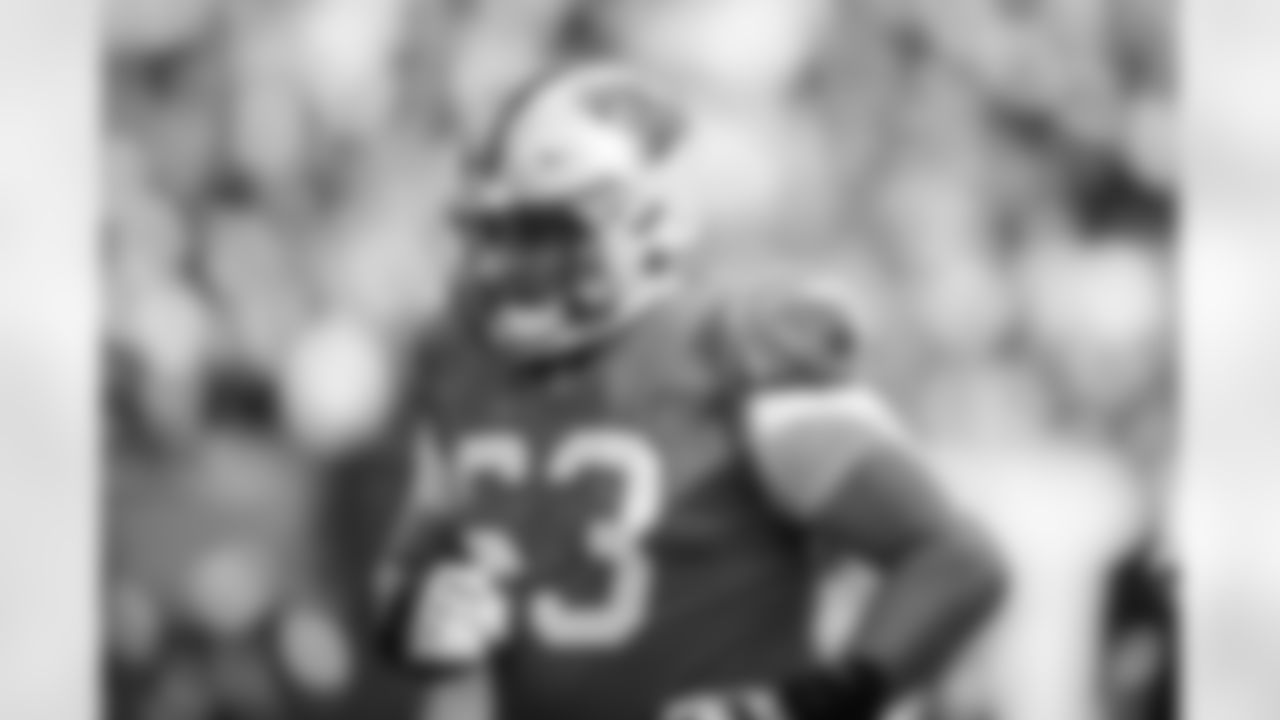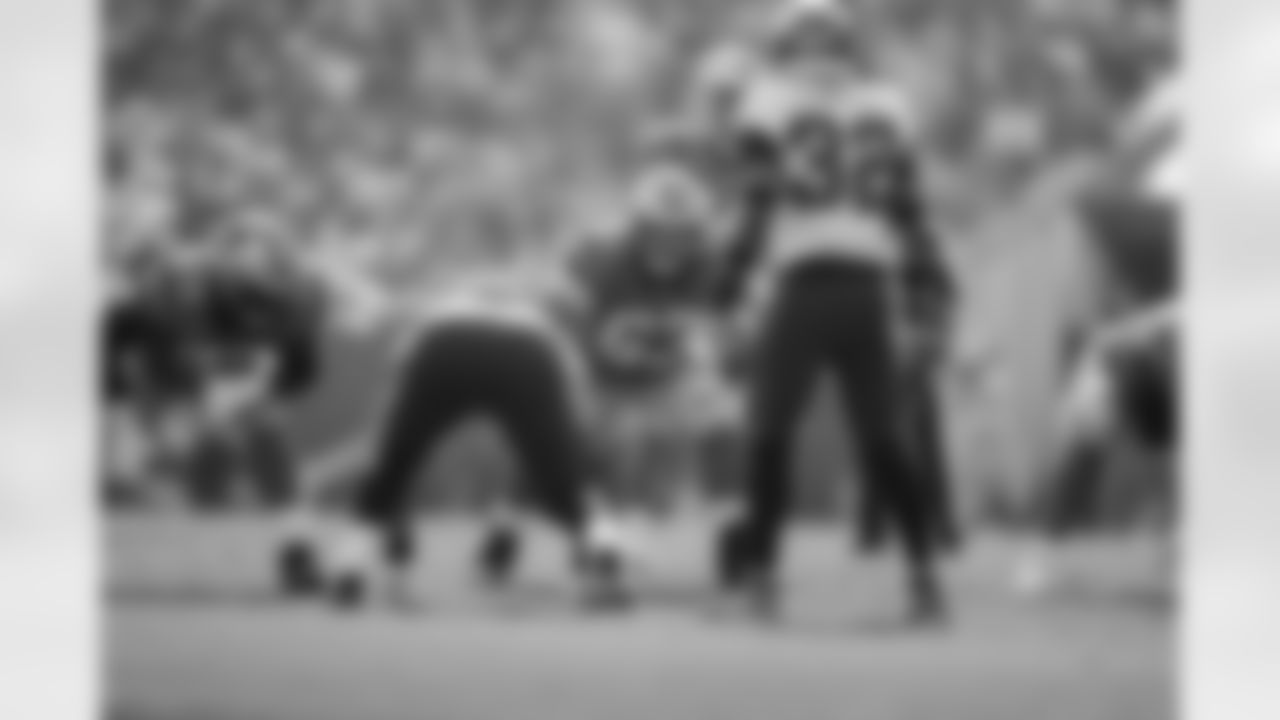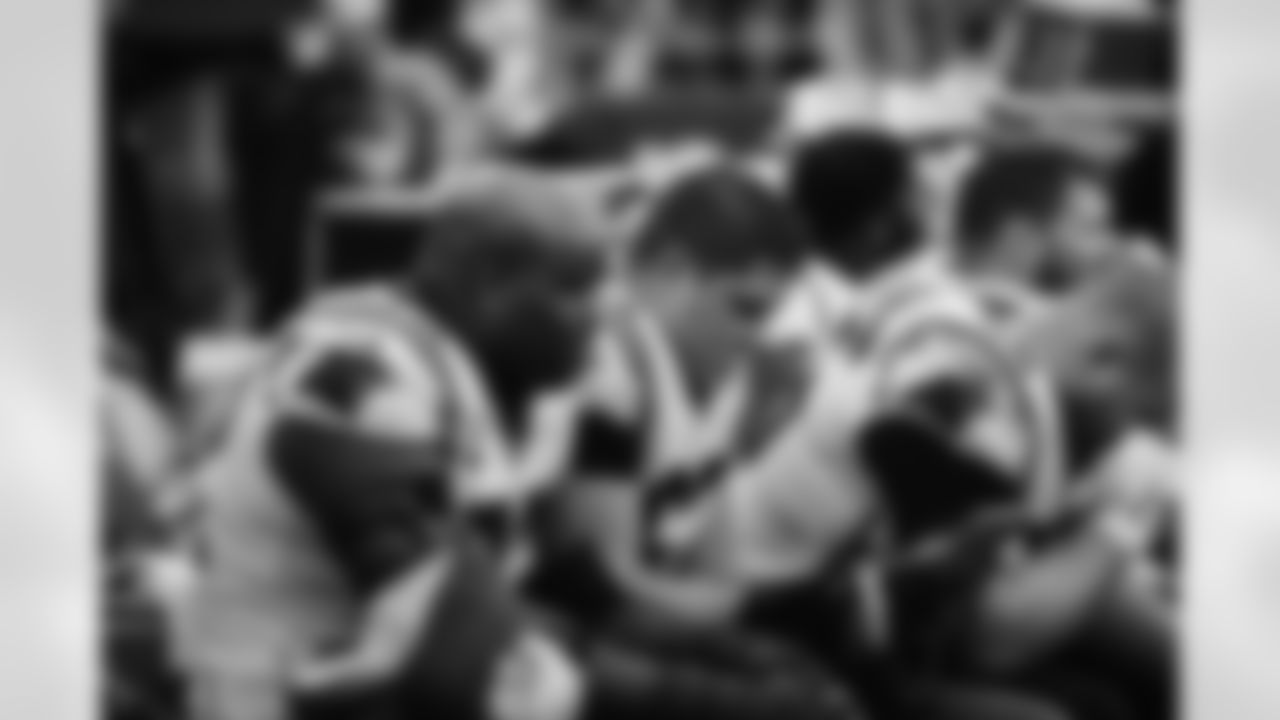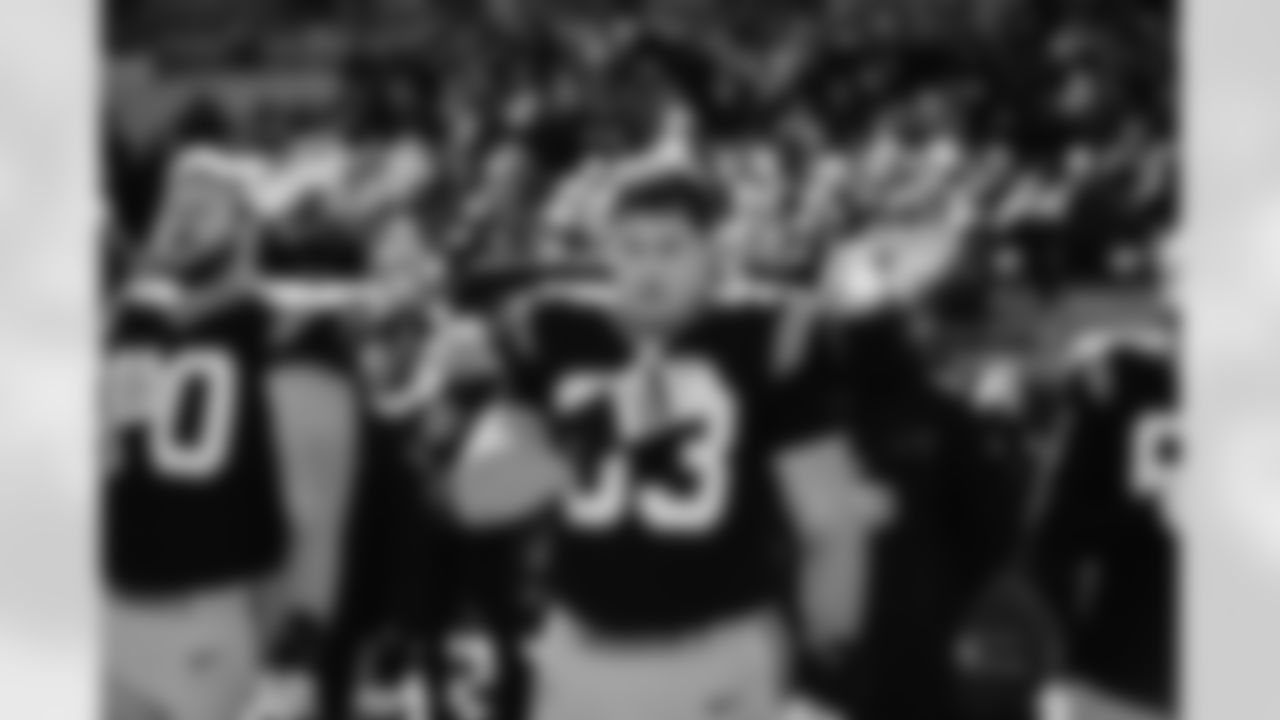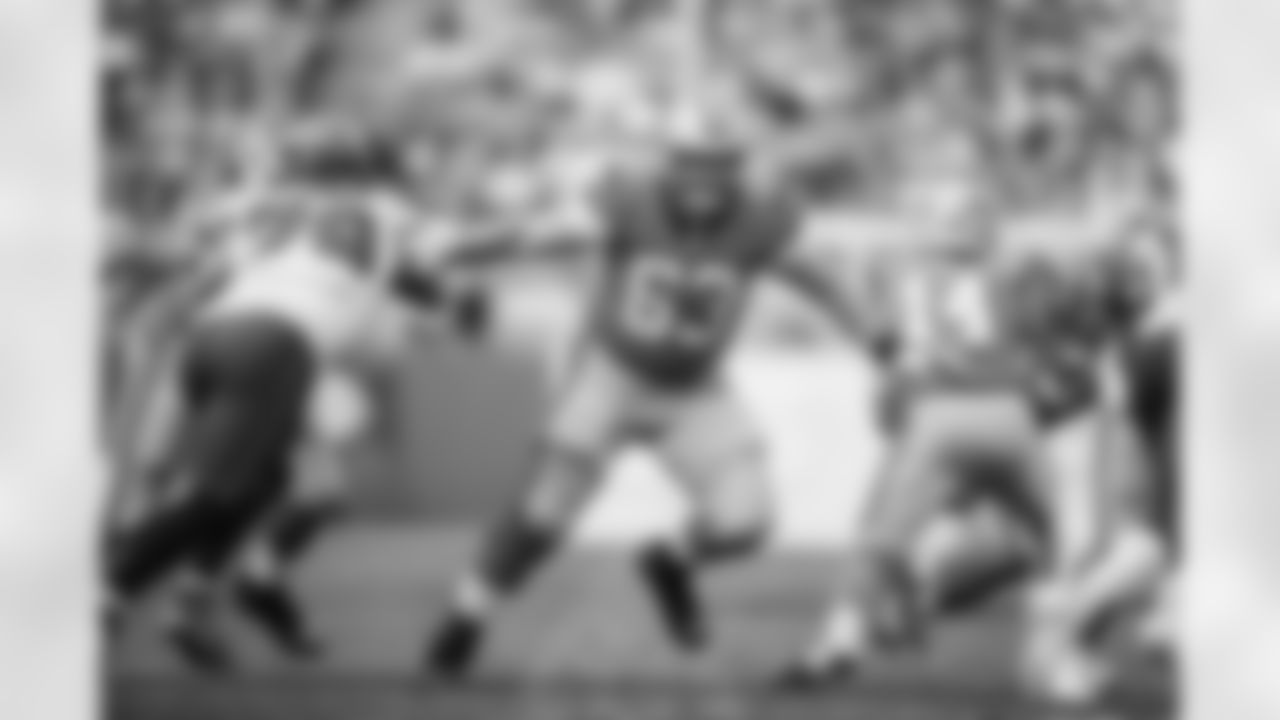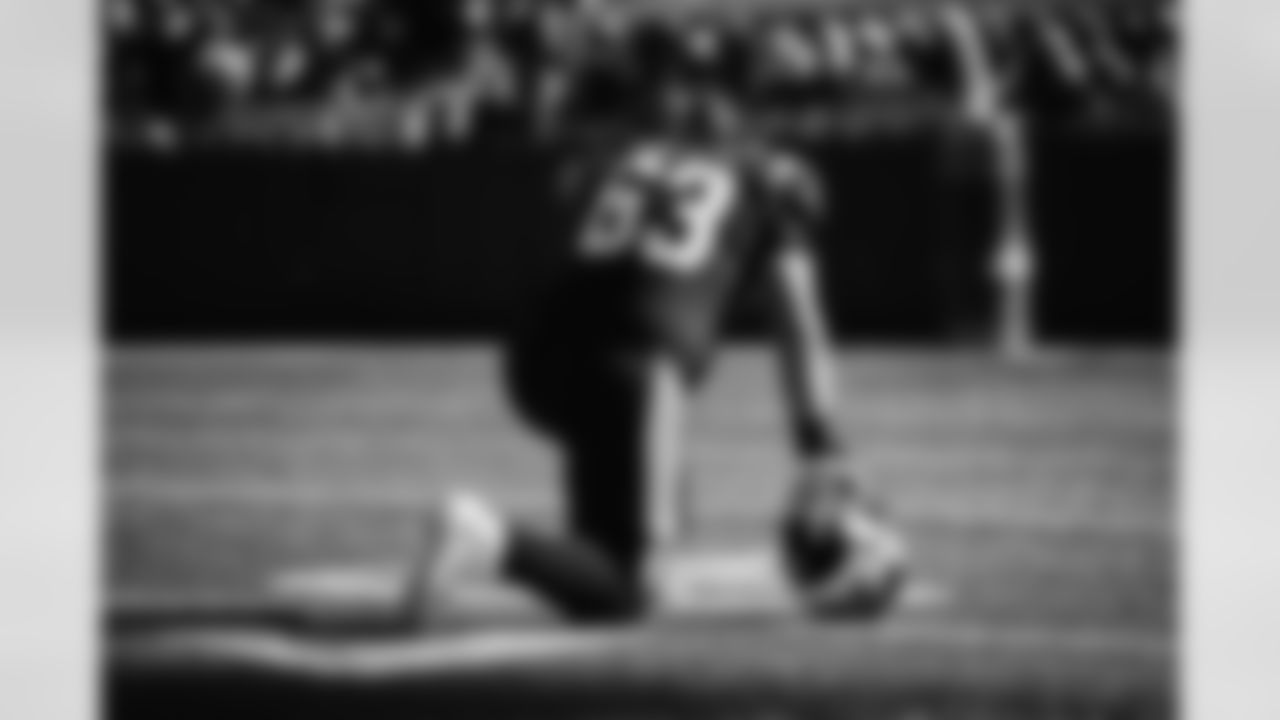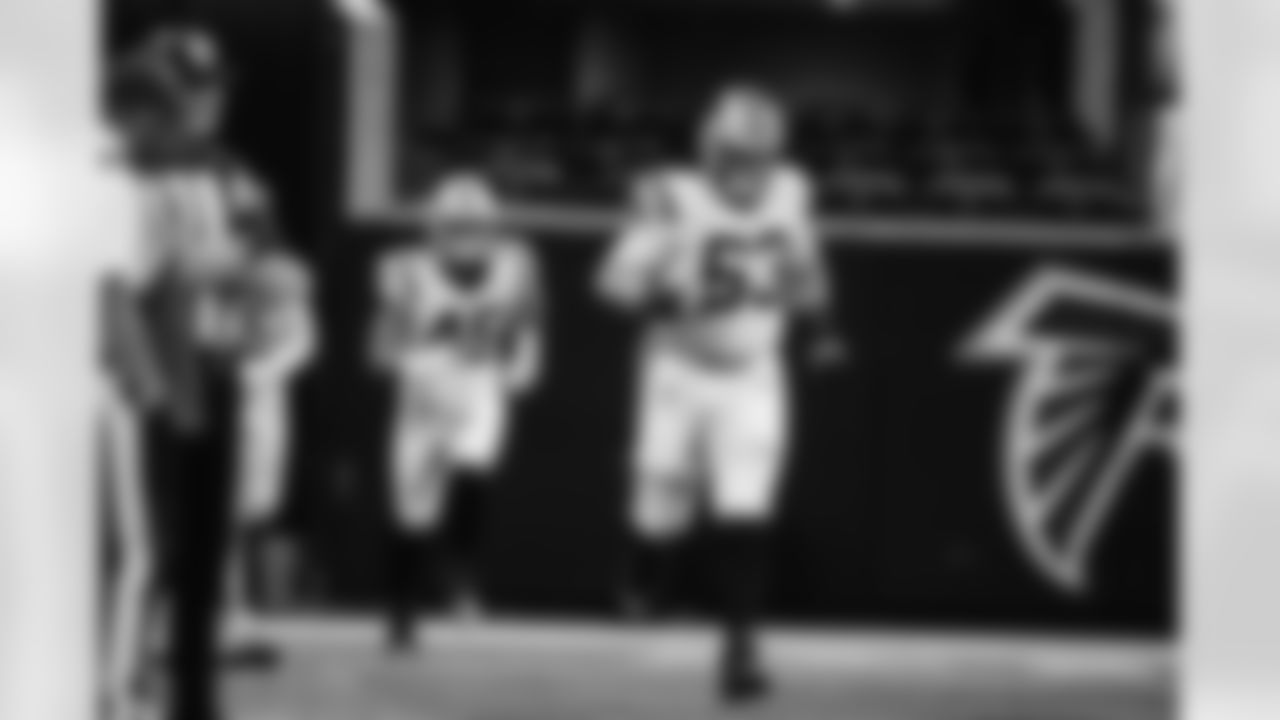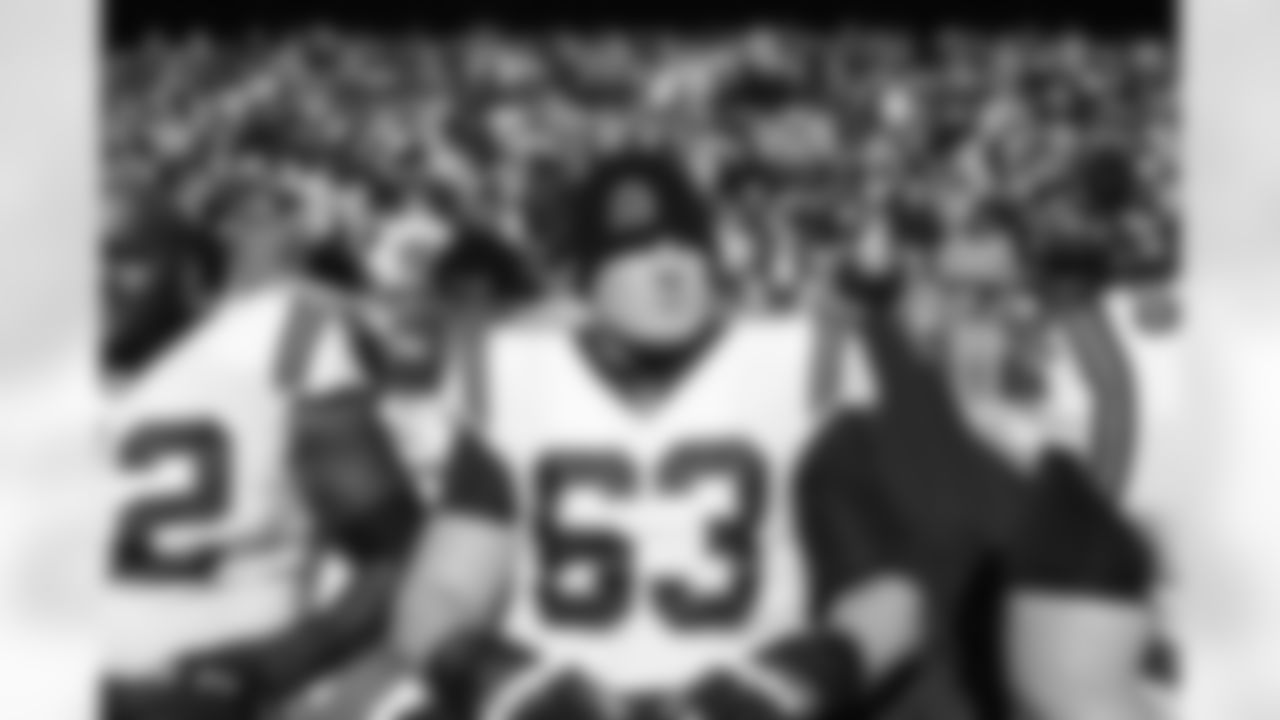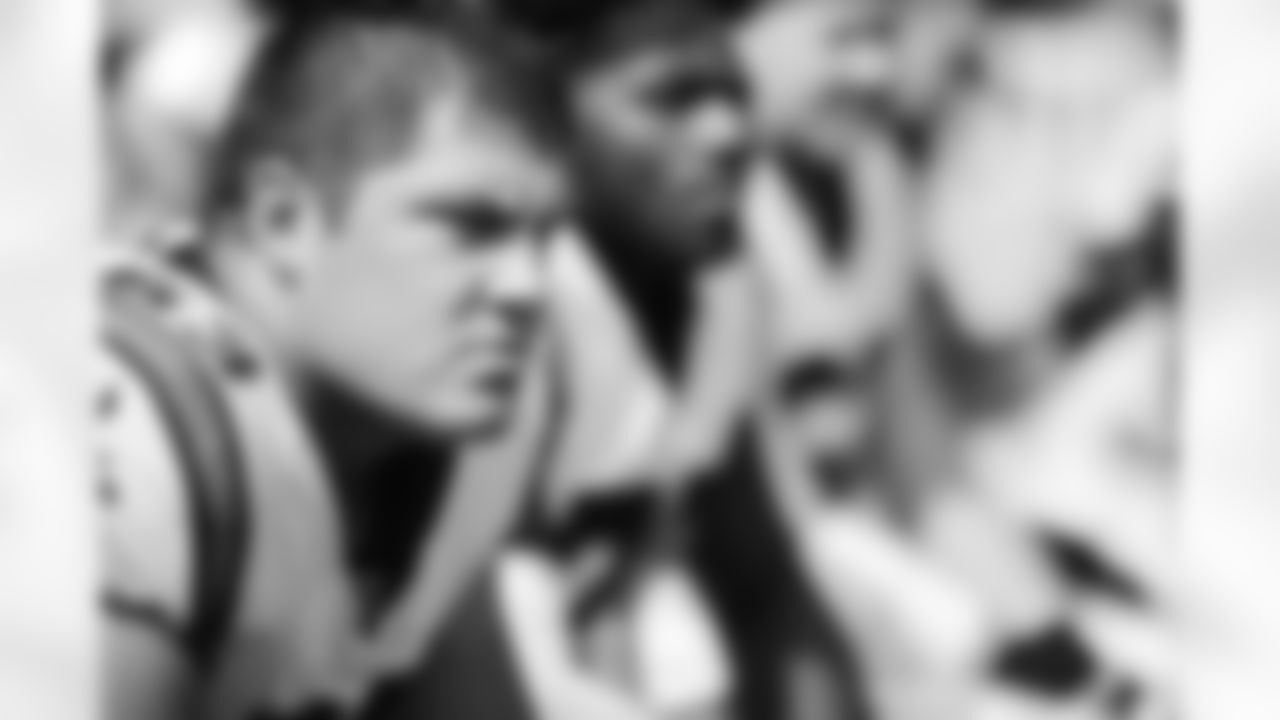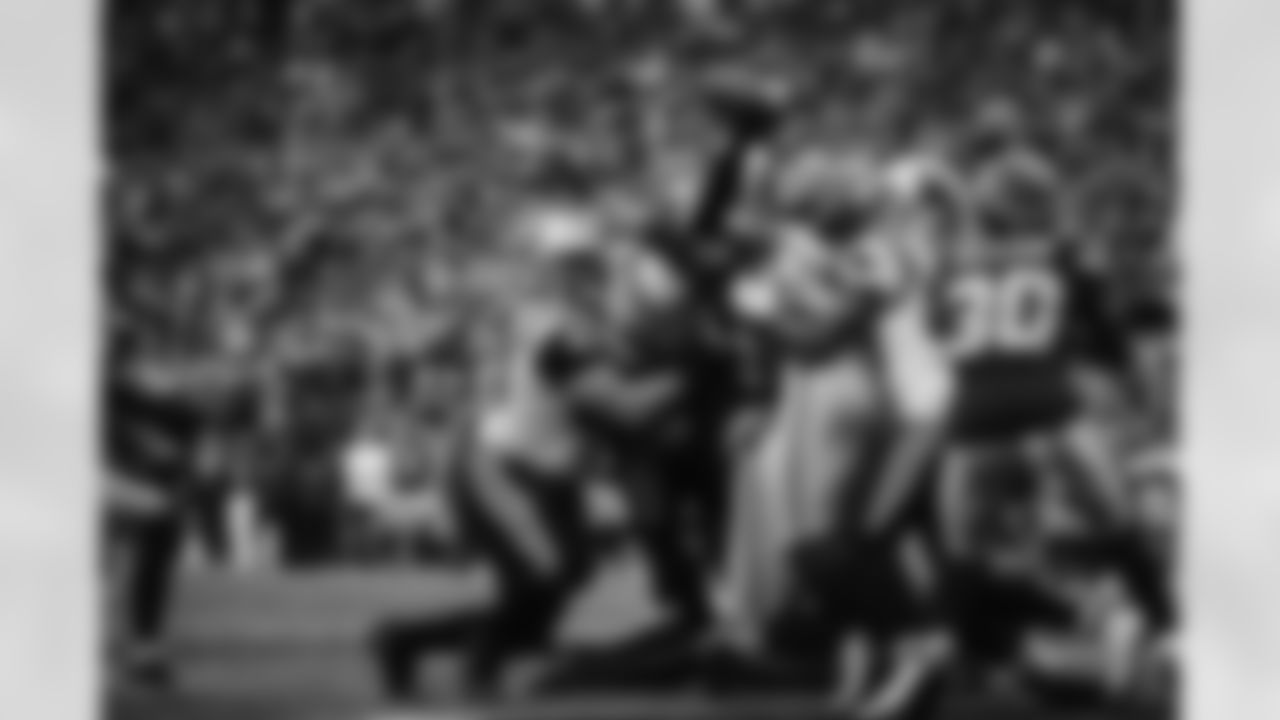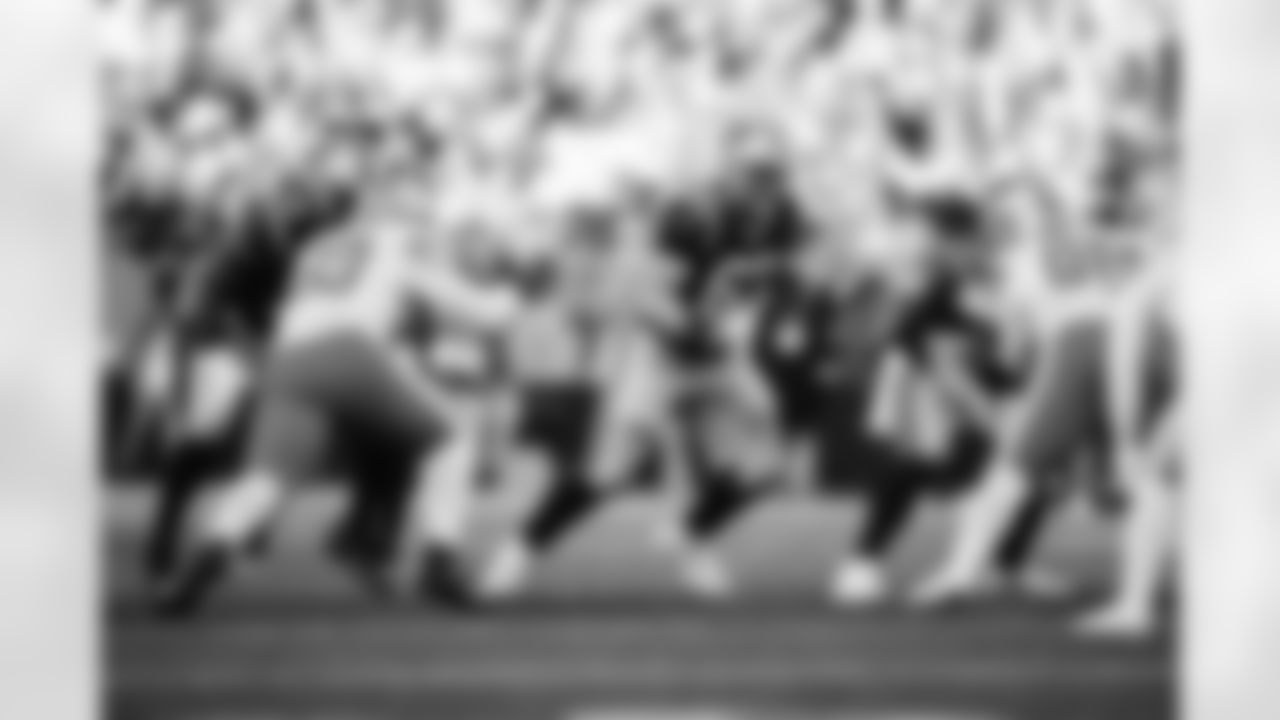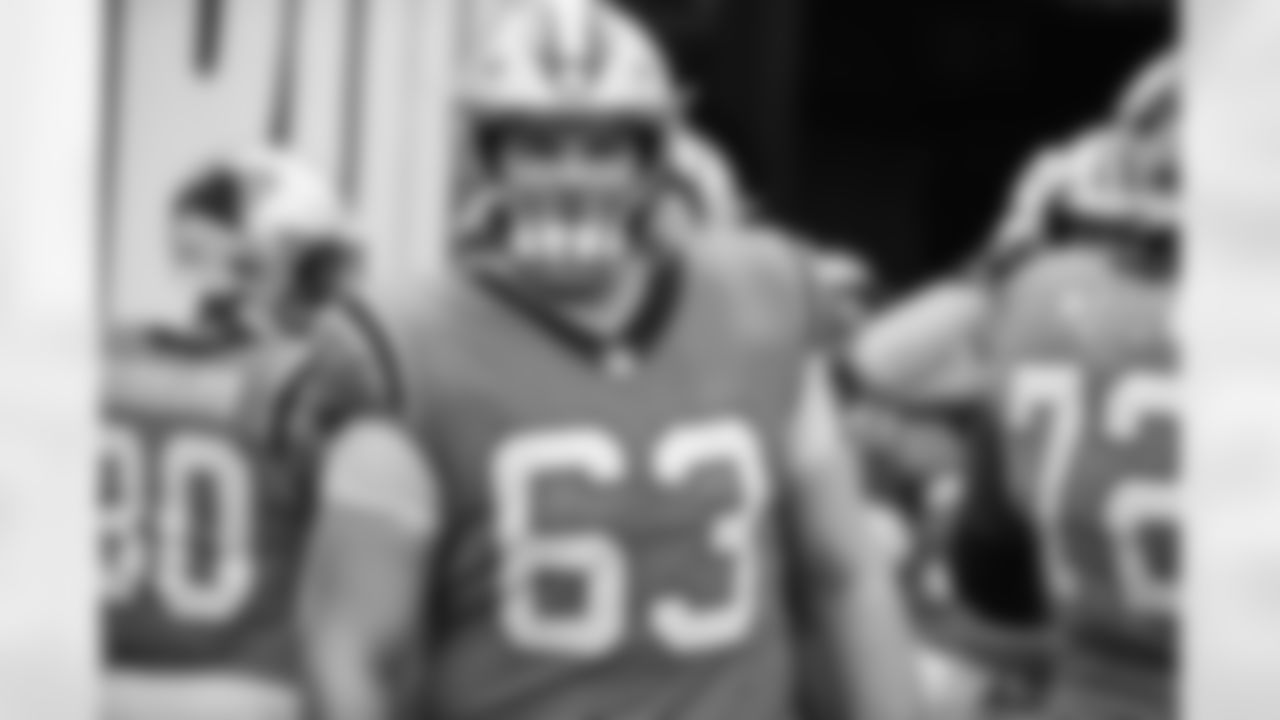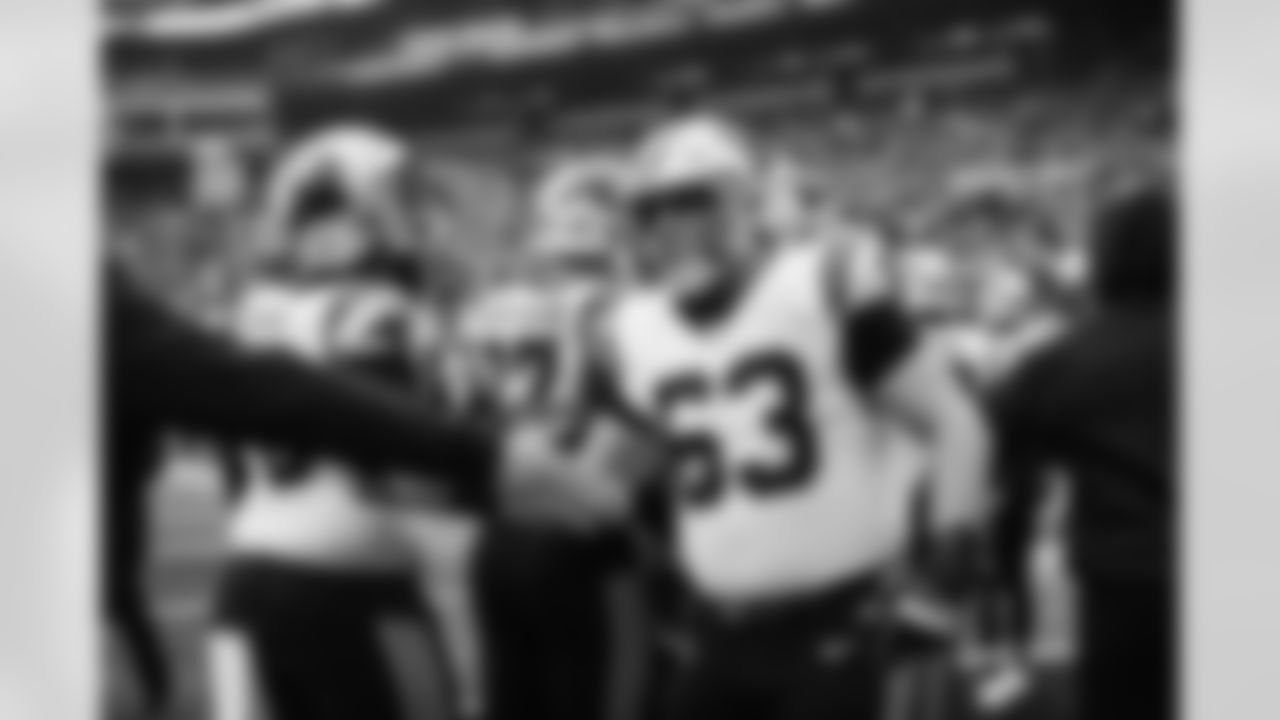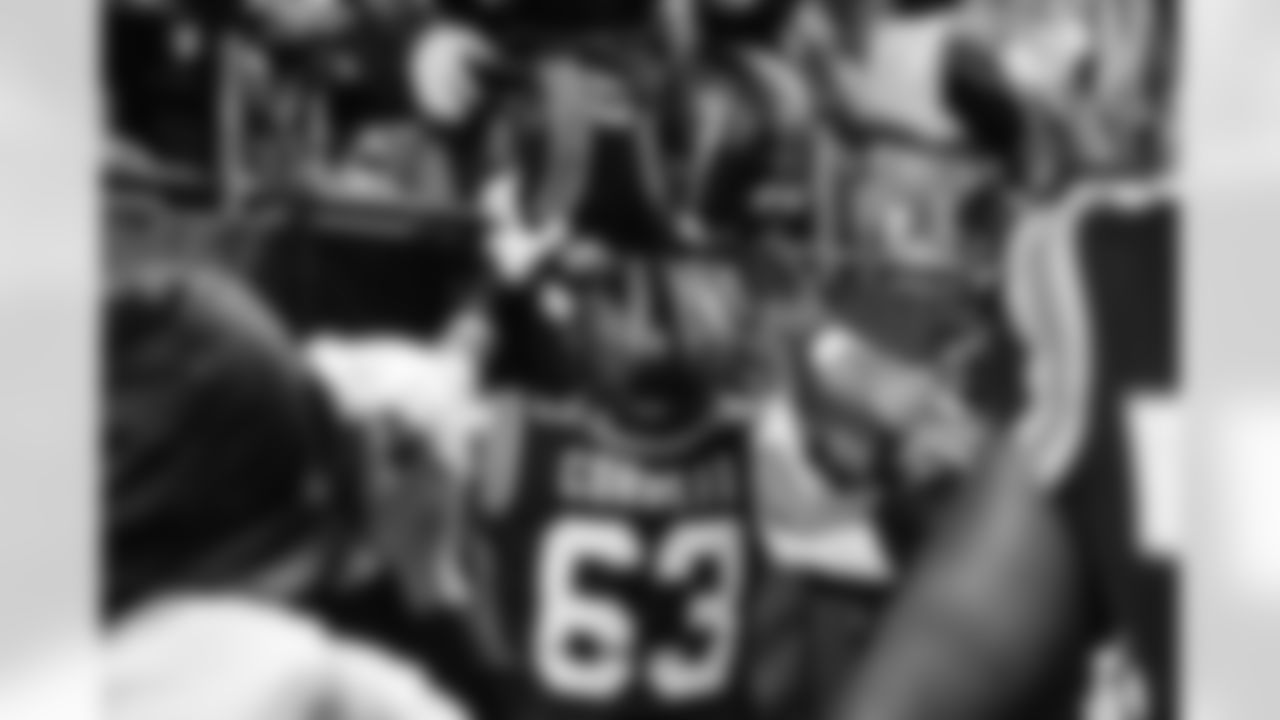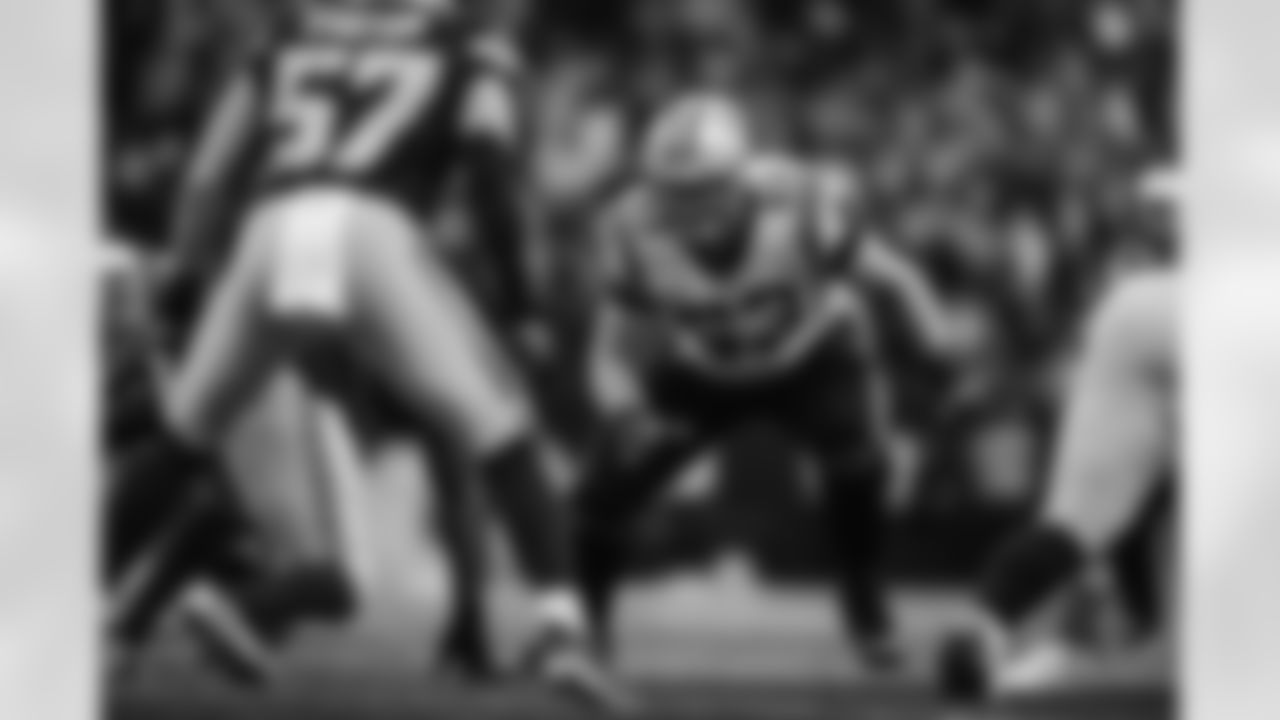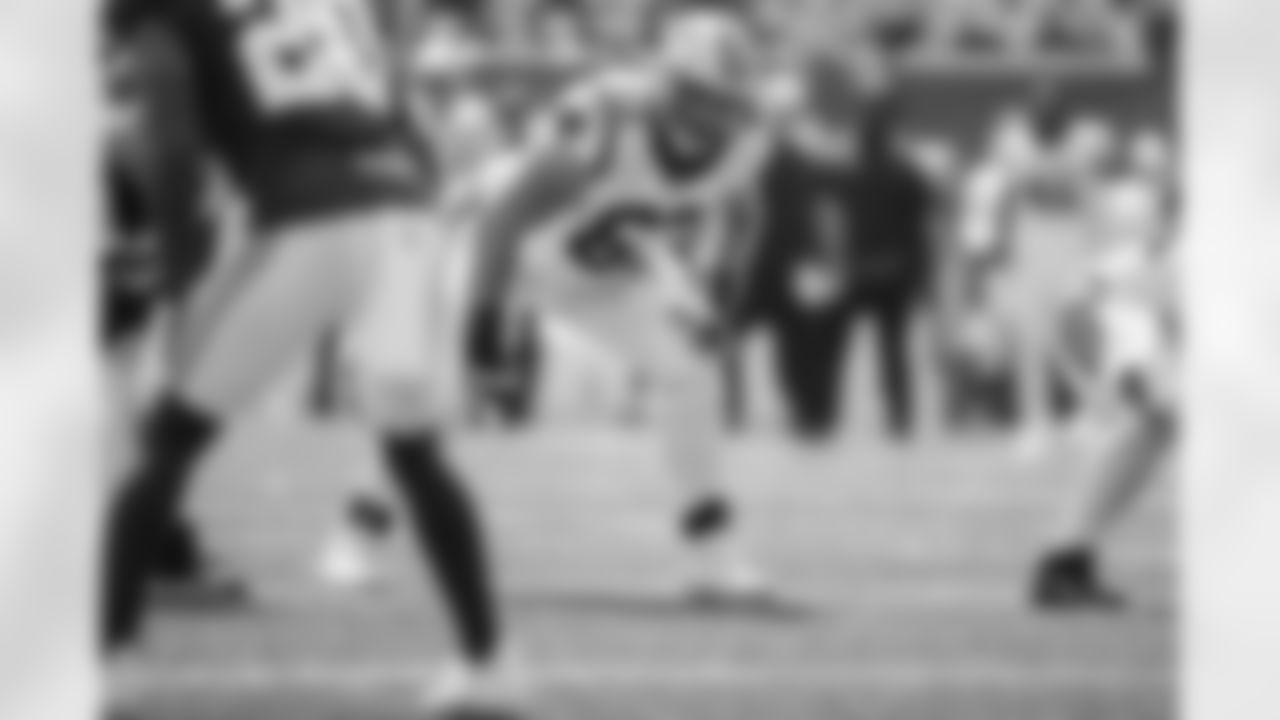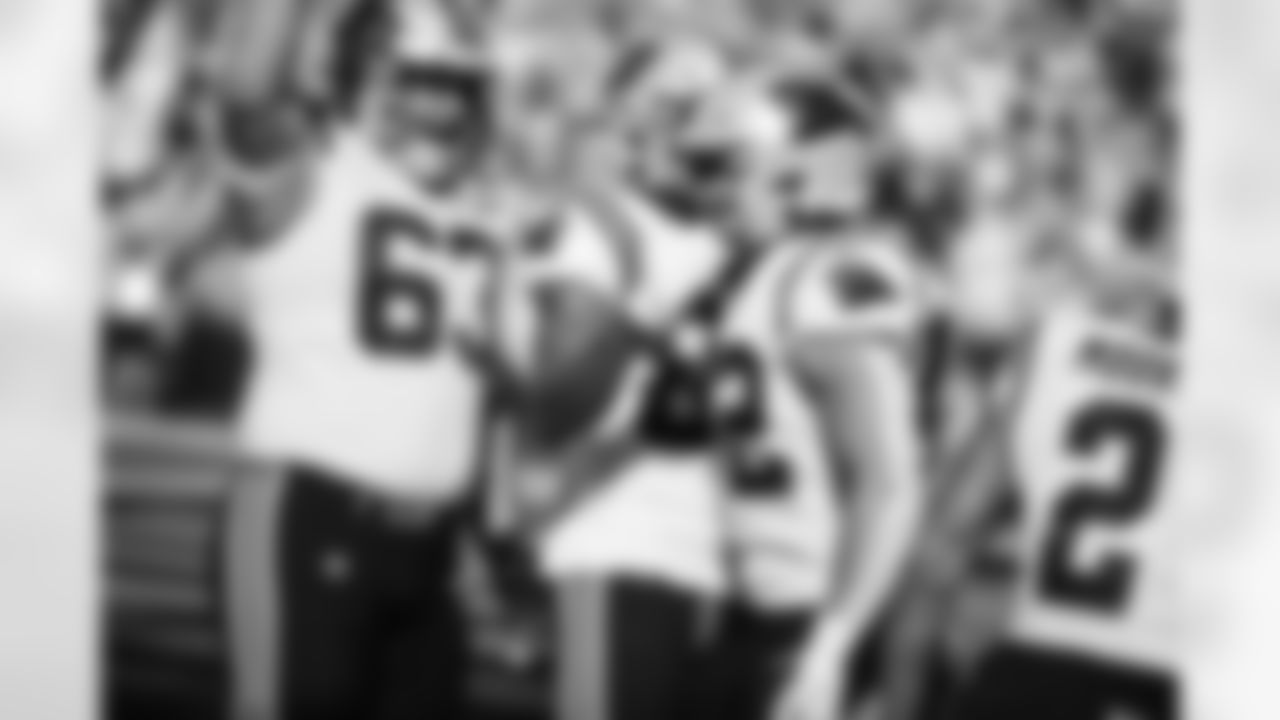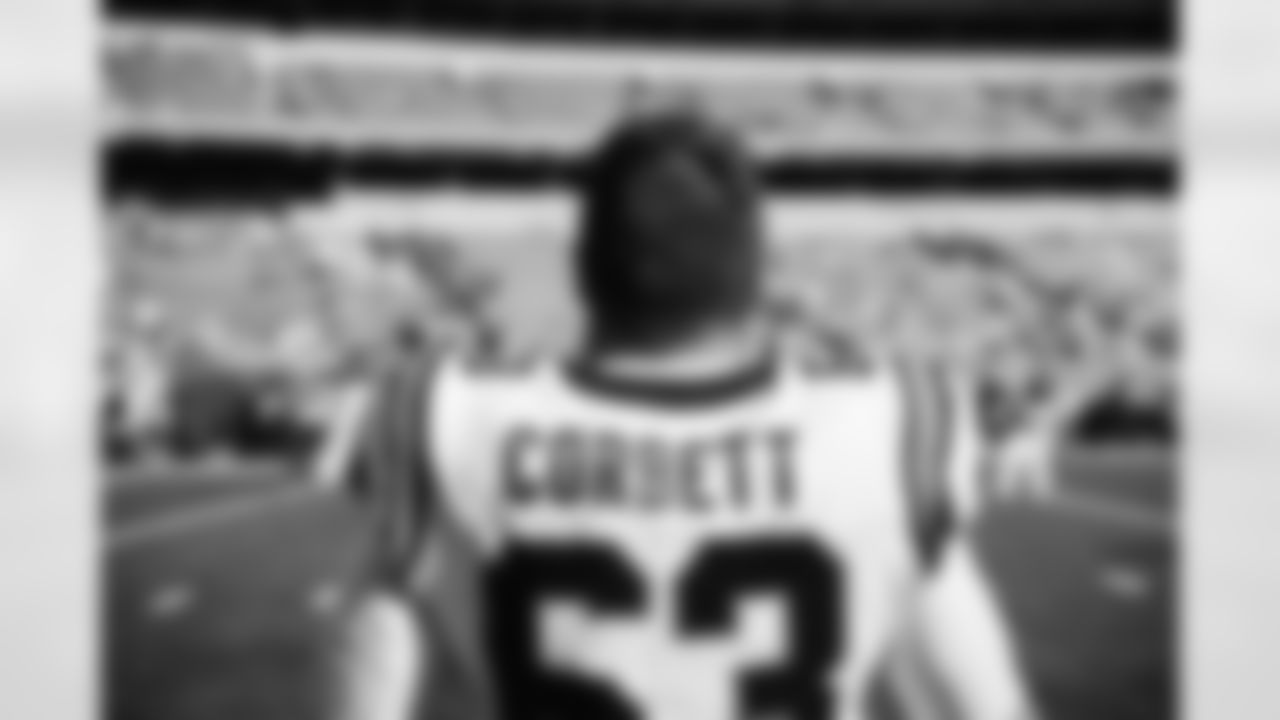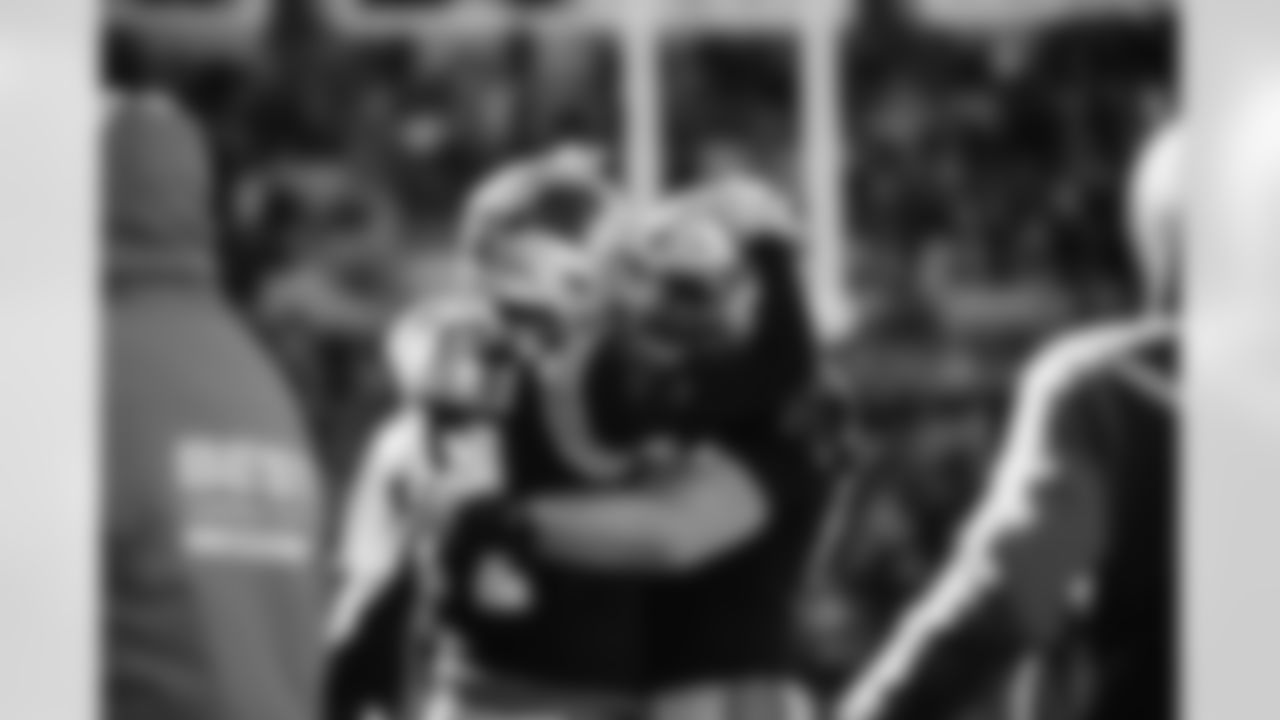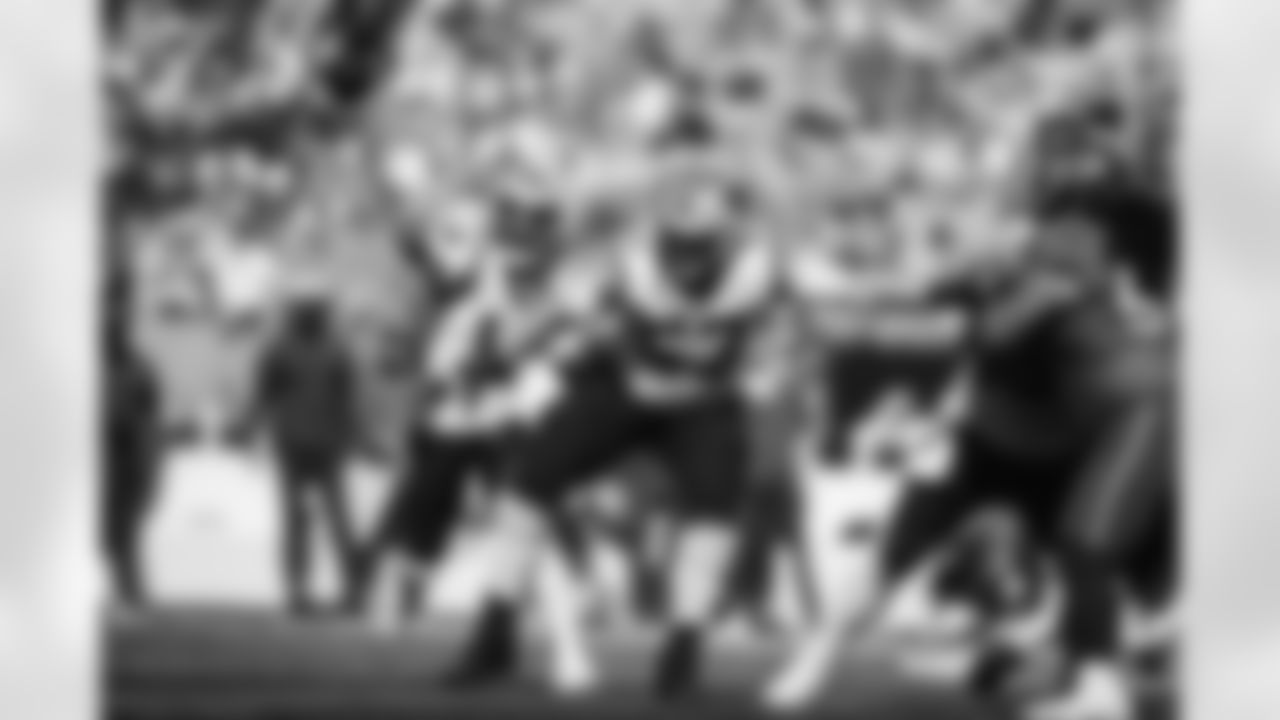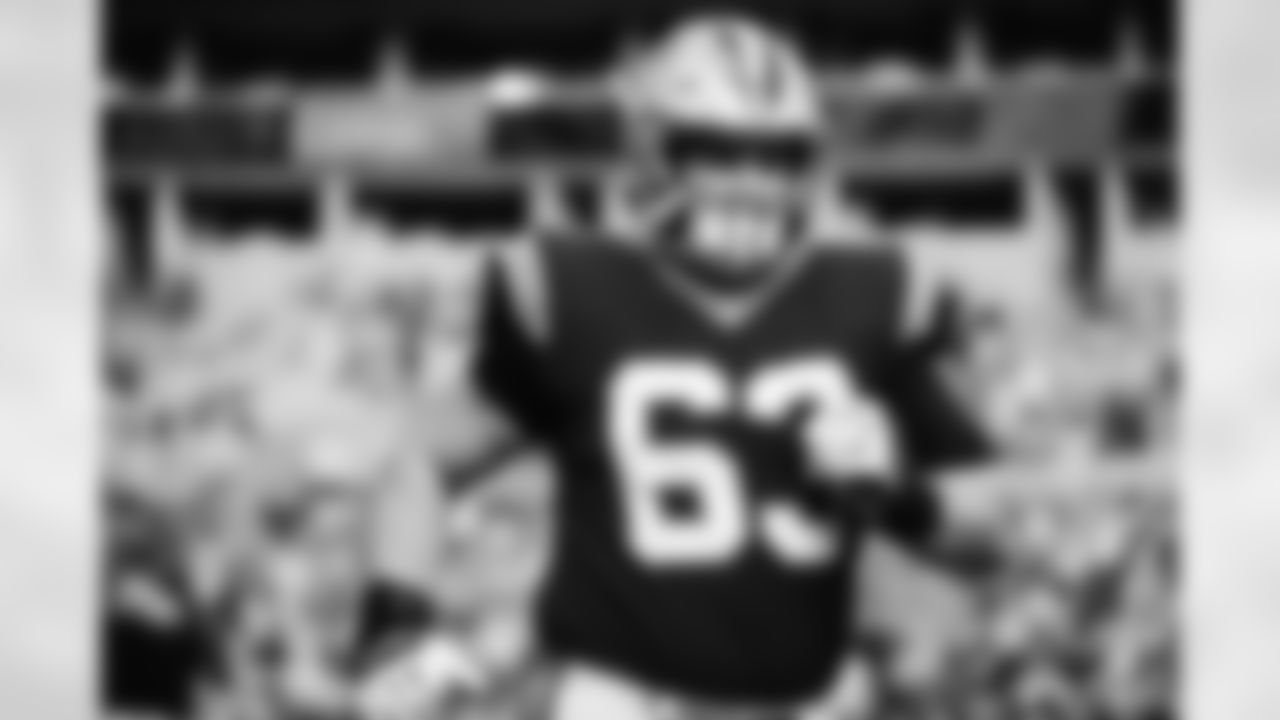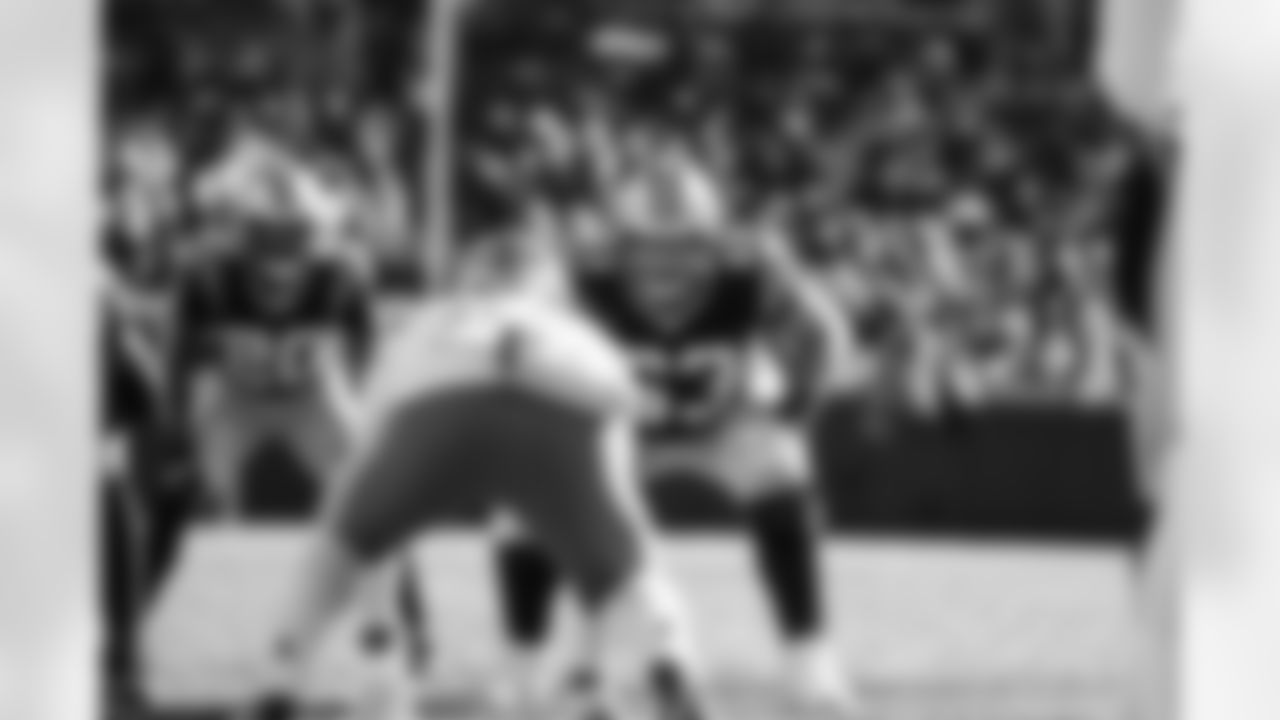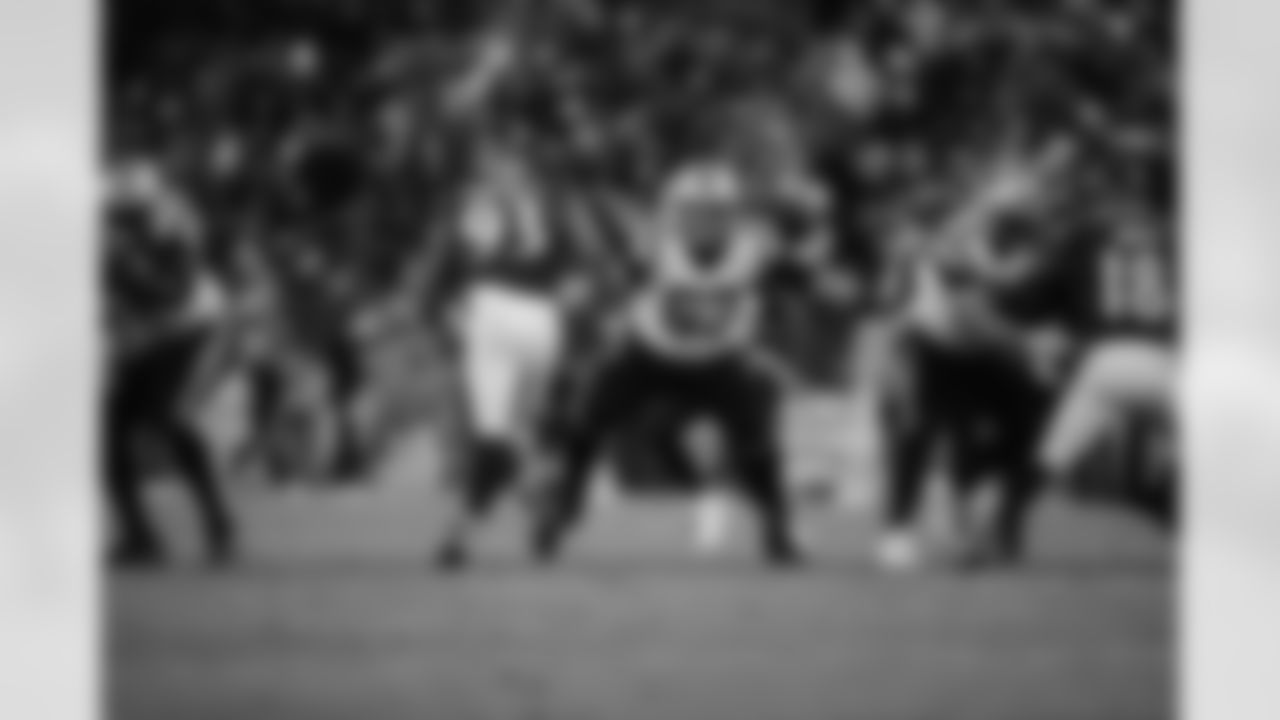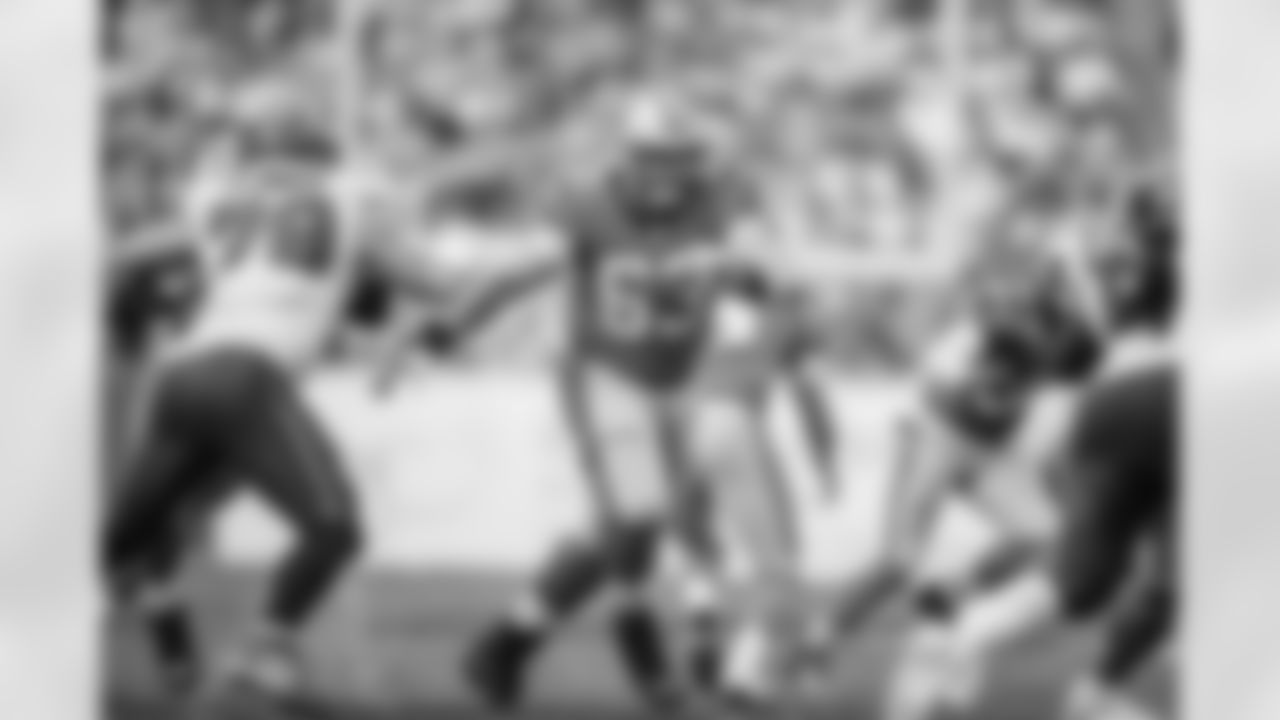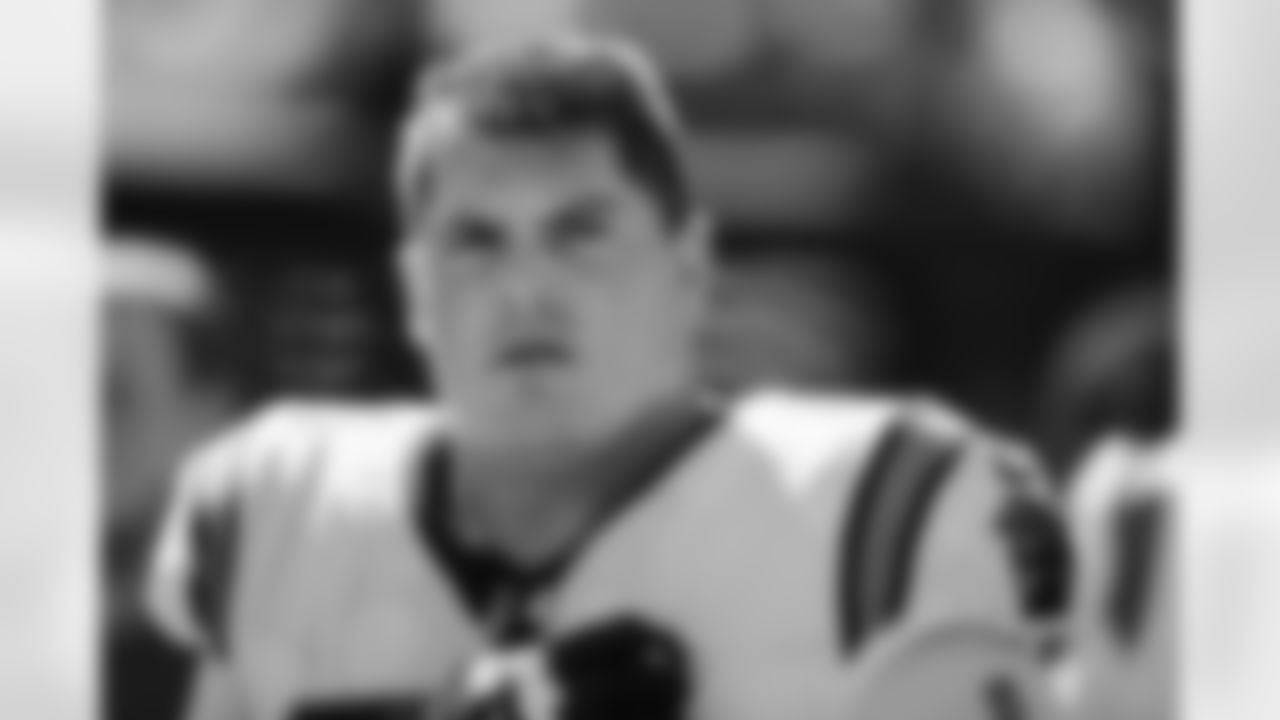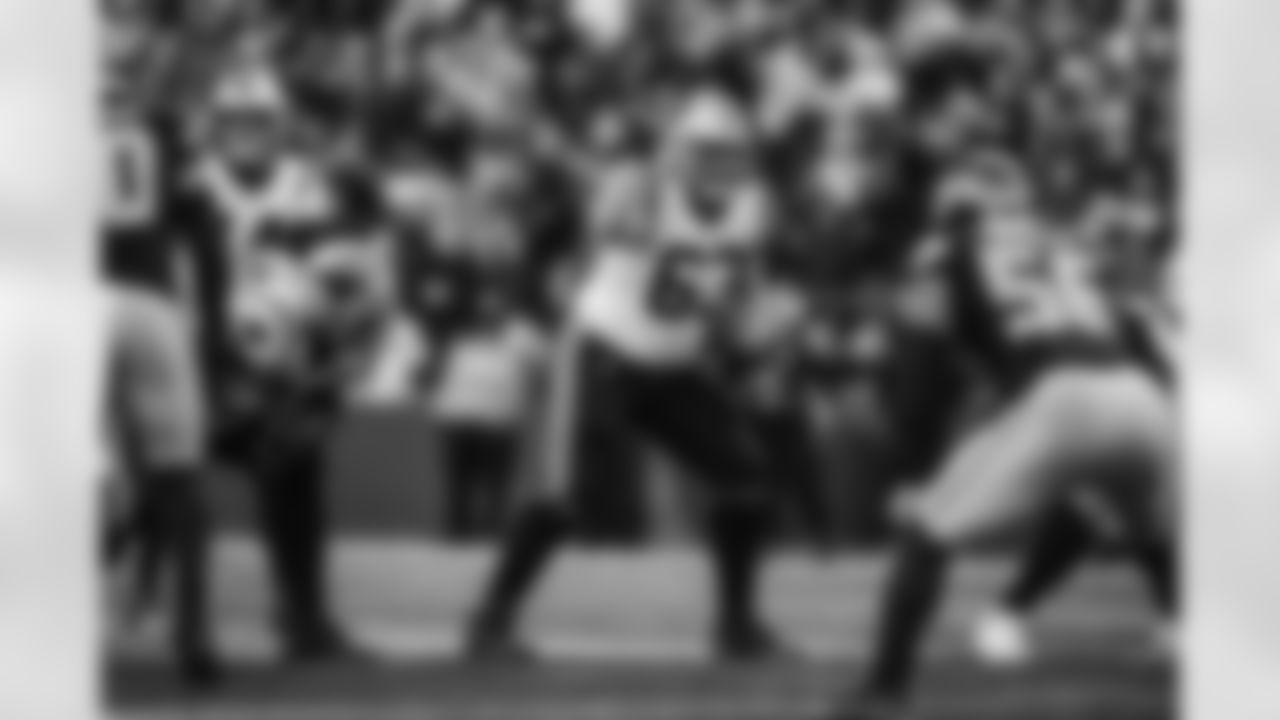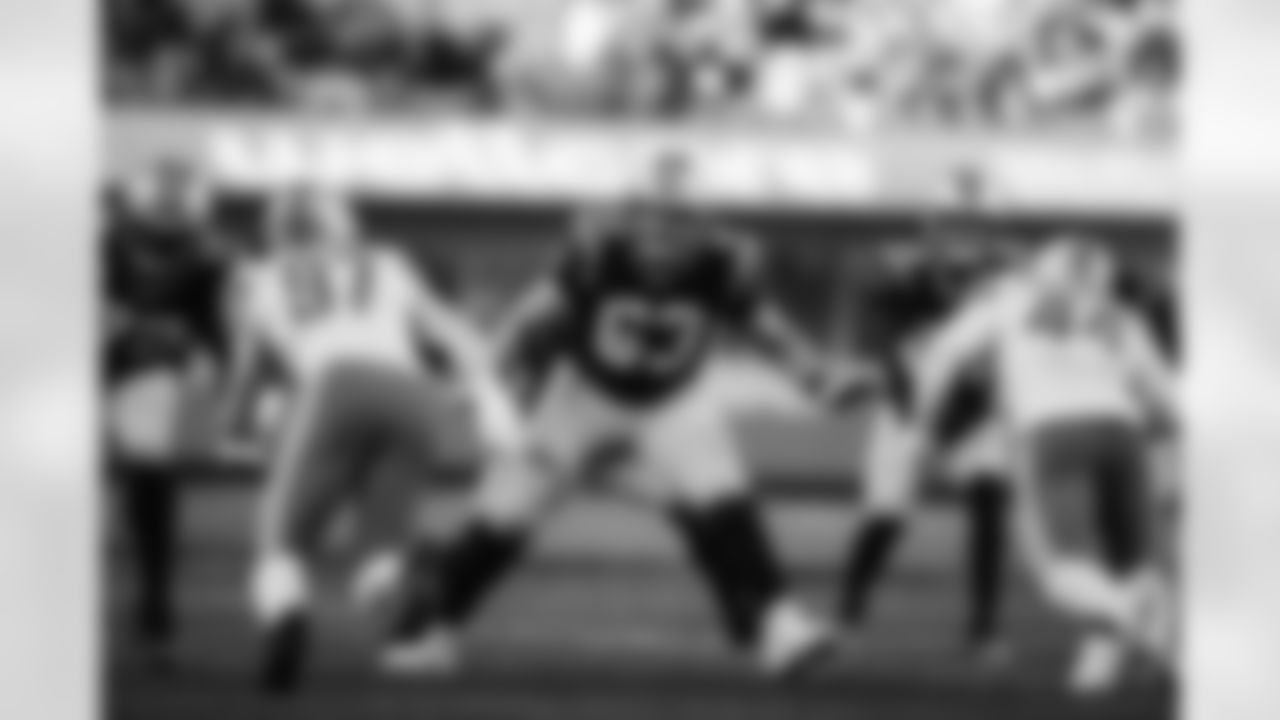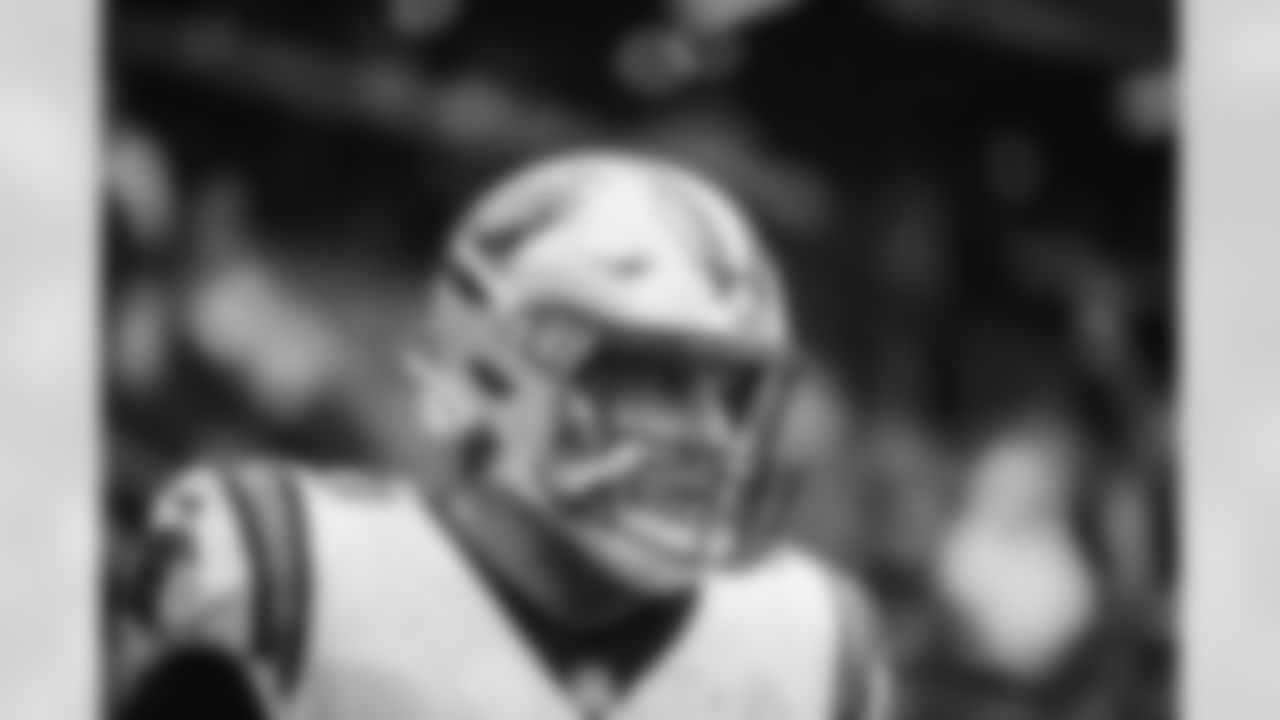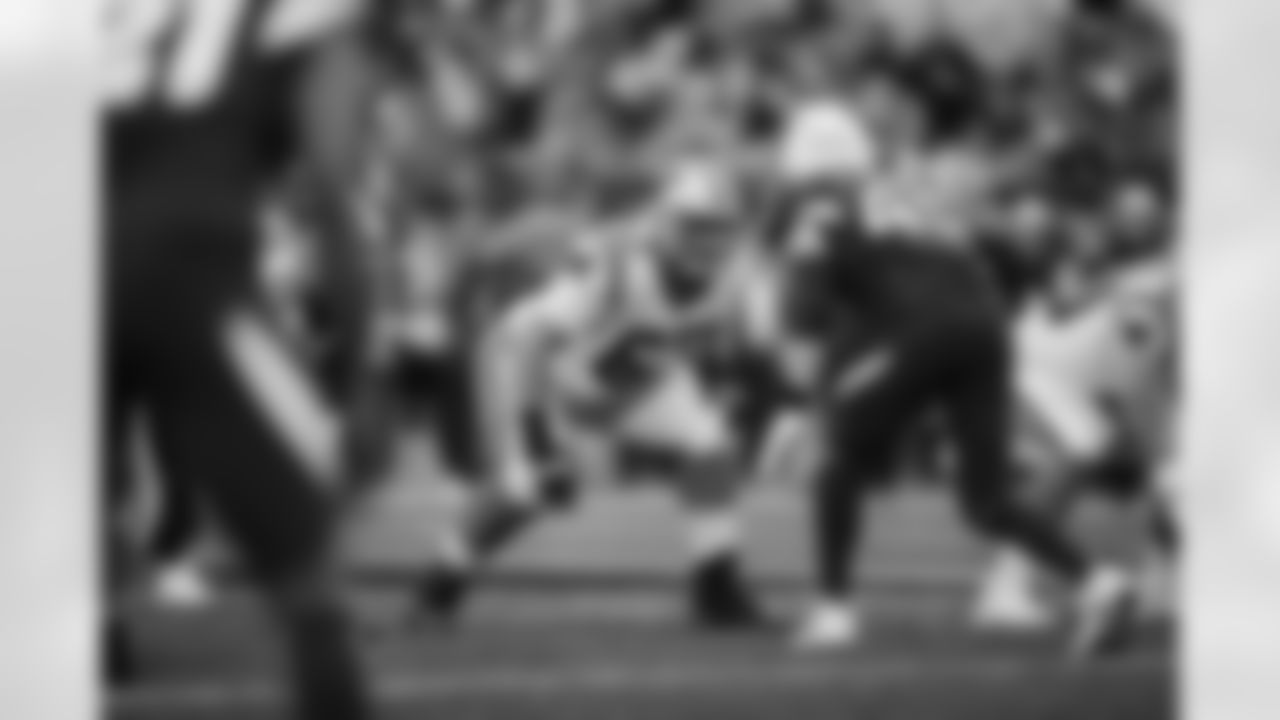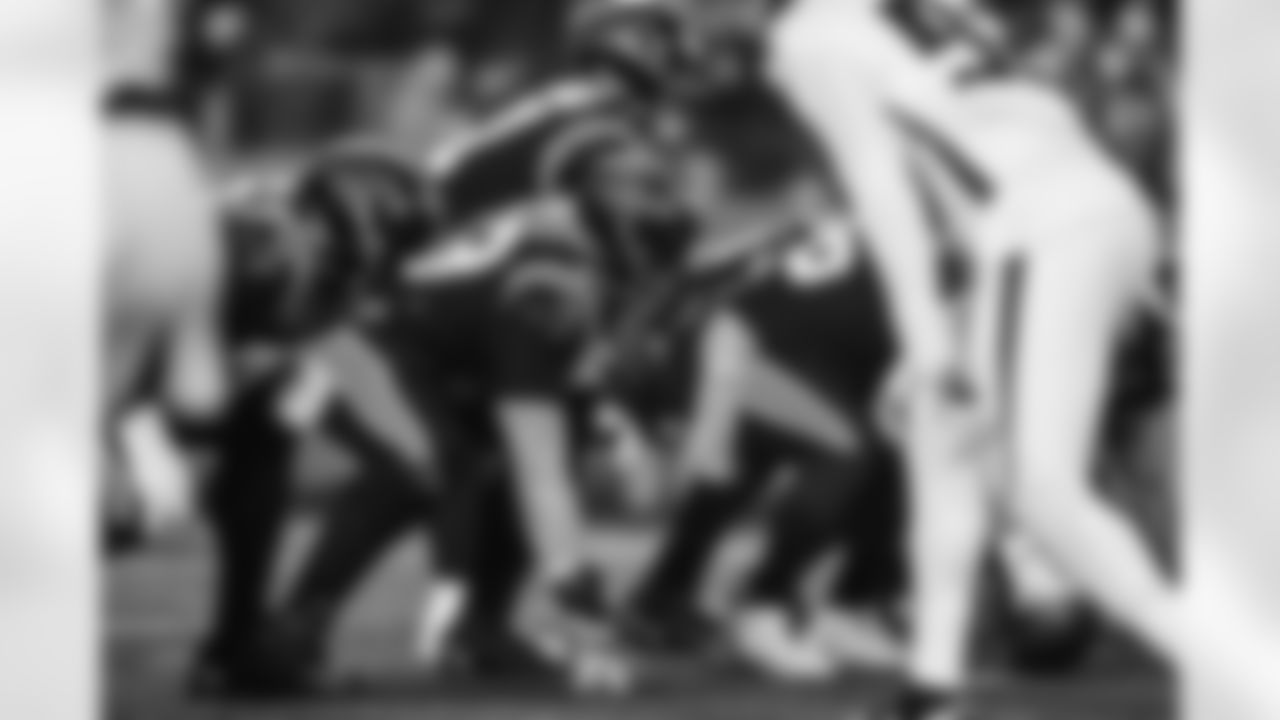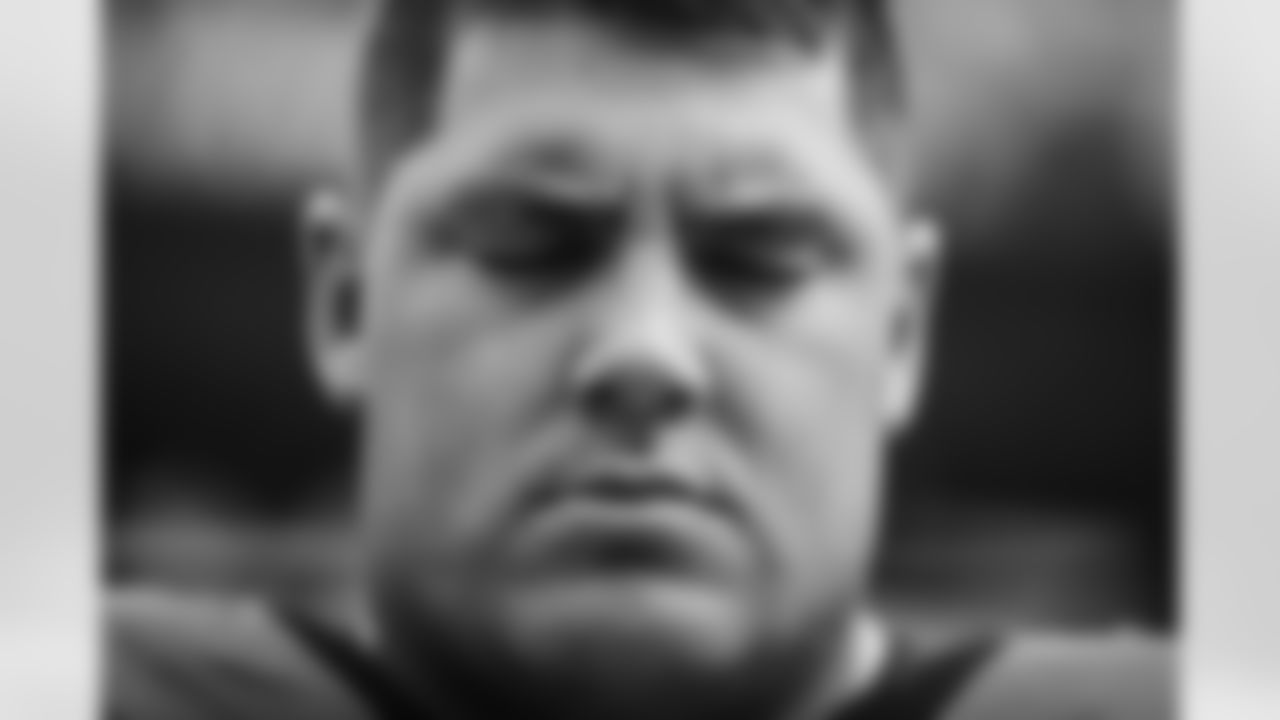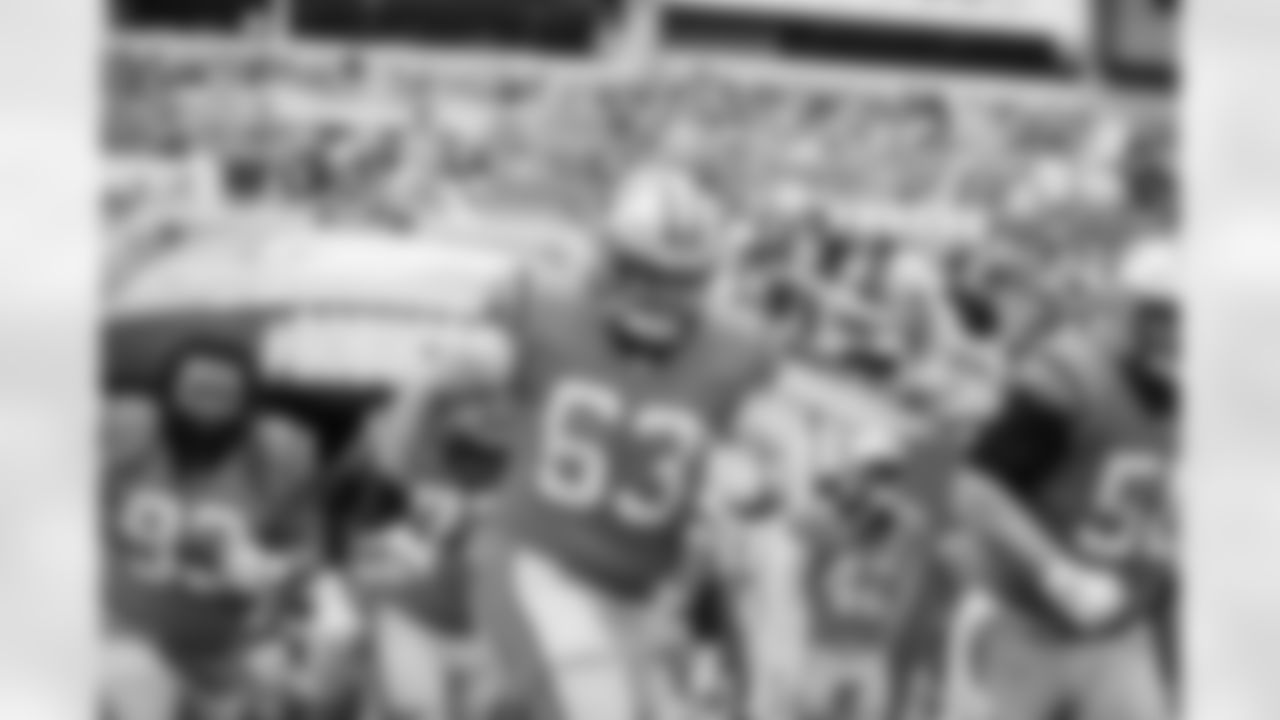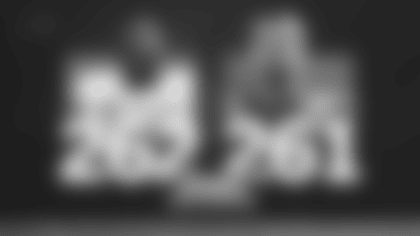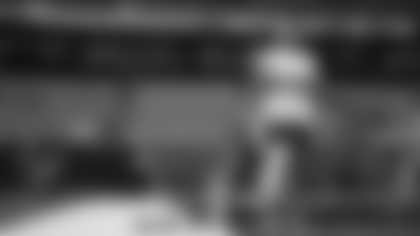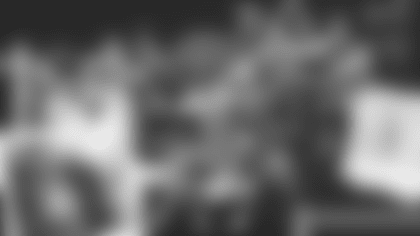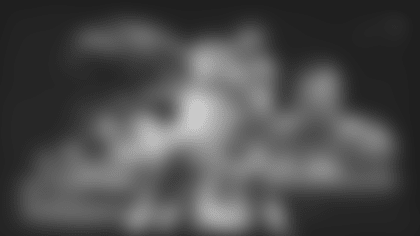Panthers right guard Austin Corbett suffered a torn ACL on Jan. 8 in the regular season finale against the Saints. He has agreed to take us inside the rehab process, explaining his perspective on what coming back from the injury entails from a physical and an emotional standpoint and what the months of work to return actually look like as they're happening. This is his story, as it unfolds.
Read the first installment in the series here, and the second month here.
CHARLOTTE — There's a certain freedom for Austin Corbett these days of simply being able to walk through the house to get something for his wife.
Of course, he's learning to walk all over again after surgery and finally putting his crutches down, and he's learning to walk in the clinical way an orthopedic surgeon or maybe a structural engineer would teach someone to walk.
You don't have the luxury of singing "Put one foot in front of the other" when you're an NFL player recovering from a torn ACL. You have to be very specific and mechanical when it's time to go to the kitchen for a bowl of ice cream.
"I'm actively thinking about my gait and making sure my quad's activating and getting good heel strike," Corbett said, and he laughs because he knows nothing about this process is normal.
He's at least fortunate that he has the educational background — he studied kinesiology at Nevada and thought about going to medical school before it became clear he was good enough at football to make a living on the field — but that also means he thinks a lot about the very particular movements inside his body as he goes through rehab.
He needs to get each of those individual components right every time he walks across the room, lest he set himself back in what has already been a trying process.
"The big one is, make sure I'm getting a good true heel strike, then rolling over the heel and getting that push-off of that big toe," he said, explaining step one of step one. "And then am I getting a good knee bend on the way back through that cyclical action, and firing the quad? Again, make sure I get full extension and back into that next heel strike, truly just all the way through it.
"And that's non-stop. It's never-ending. I mean, I get tired, and sometimes I get lazy and don't do it right, don't bend it as well. And Madison will yell at me like, 'Quit limping.' Sorry, I'm tired."
She's not yelling out of meanness any more than the entire cast of characters surrounding Corbett through this process are pushing him to get every step correct. And it's an ever-growing cast, because Corbett has hit a significant milestone in his rehab after ACL and meniscus surgery in January.

Initially, he was sentenced to six weeks of non-weight-bearing work after the surgery. And not supporting your own 305 pounds or so with your own two feet means you need a pair of crutches. They became a part of Corbett's anatomy for those six weeks, an extra set of limbs. They were necessary, and he might not be at this point without them, but that doesn't mean he wasn't glad to be rid of them.
So the callouses on his hands — the natural consequence of dragging yourself everywhere with the assistance of external support — are only now beginning to recede.
"I've still got some leftovers," he said, holding his hands up and recalling what the base of his palms looked like a month ago. "Yeah, they're slowly fading."
But now, Corbett has finally reached the point where he can start building up new ones.
He began doing a small amount of weight-bearing work last month, using the AlterG treadmill in the weight room to support him while he slowly took his first steps since surgery without the crutches. The progress is slow; everything about this is incremental. But this month, there's a milestone. He gets to lift weights with his lower body again.
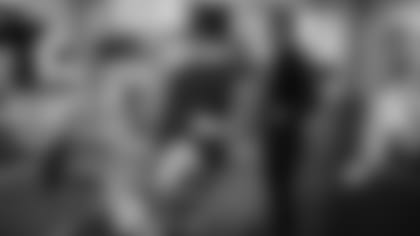
He's done a lot of cardio and core work. He's done some quarter squats with his body weight and moved up to half-squats. There are the days when he's doing leg extensions with a mighty 15 pounds. But the act of putting an actual weight bar on his back and doing what he's done for years seems like an achievement.
"I think sometimes it can be very challenging because things have always come easily for some of them," staff athletic trainer Katy Rogers said. "They're skilled beyond the average person in most aspects. And so something so basic can sometimes be frustrating to an athlete."
Rogers has gotten to know Corbett well over the last three months since the injury. The athletic training staff becomes family to these guys when they're well, but when players are hurt, they take on even more duties. Part of it is therapist, part of it is teacher, and part of it becomes a cheerleader. Because when a football player is used to squatting hundreds of pounds, the little steps can seem sort of insignificant.
"You have to document and watch the entire progress to see, 'OK, we went from 10 pounds to now we're doing 100 pounds, right?'" Rogers said. "So you have to really highlight those big milestones, especially in long-term rehab because you're with them from day to day to day. So then you can go back and say, 'Remember when we were here?'"
"So, initially, he was limited in his depth, so you start with like a mini-squat. So he's doing a tiny little mini-squat, then a quarter-squat, and then he works on half-squats. And then, you can add weight to a quarter-squat. So like this week, we've added the bar to his back, and we're going to add the bar to his back with a quarter-squat. And then he'll go work on loading weight with that quarter-squat until they can get to a half-squat that's loaded."
Those incremental steps of improvement can work on you on your mind as much as your quadriceps. Because when you're in this process, it can be hard to imagine an empty bar as a step in the right direction. But when it comes a month after your strength work came from a blood-flow restriction device (which simulates resistance training by squeezing an area of the body to push blood out, then letting it back in), sometimes people have to remind you that things are being accomplished.
"I think a big part of it, too, is just the education aspect on our part," physical therapist Kylan Smith said. "It's important that we have to do step by step to get them to buy into that a little more. Sometimes it's hard to think about, why are we doing this exercise, that sort of thing. So just making sure that we spend time educating them, like, why what we're doing is important and how that's going to get us to the next step.
"So it's nice with him because he has a kinesiology background. So he knows a lot of what we're talking about. And so I think it's exciting for him to also understand what's going on with his body."

It's also exciting to get Corbett around other people and back in the weight room.
He's a personable guy, used to the camaraderie of a locker room (where guys in your position group keep careful track of all the content you're part of). And when you're in a team environment for as long as he's been, it can feel isolating to be hidden away in the athletic training room. That's why he's developed such a close bond with the staff in there and why he also has taken up a social media habit to fill in the hours. But it doesn't replace a group lift, so all the people who are helping him have to constantly remind him of the progress to keep him focused.
"Each person is different, and what motivates them and trying to figure out what triggers them and motivates them the most is big," Rogers said. "A lot of these guys are highly competitive, whether that's intrinsically or extrinsically. And so kind of just catering your communication style to what benefits them the most.
"Like Corbett is extremely competitive in both aspects, intrinsically and extrinsically. And so I mean, he'll work out doing as much as he can, and being in the weight room with his teammates is very important to him; he likes to be social.
"He's very motivated. So if anything, he's kind of an easy person to rehab because he is he shows that type of leadership, he's very good at communicating what he needs."
And right now, you can tell he needs to feel the familiar strain of the weight room. Corbett knows that this is a long process and that September is not something he can spend time thinking about. But he's been lifting weights in the context of football since he was in high school, so missing that has become a tangible thing for him.

So while a 100-pound plate on a leg press machine isn't much, it's a sign that something more is coming (even if it will be some time before he's pushing 800 pounds or more around like he's used to).
He realized he had lost significant muscle mass in his legs when his wife commented on how baggy his pants were a month ago. "I think she felt bad after the last article she read," Corbett said with a laugh. "She saw me the other day and said, 'Oh, wow, I can see your quad coming back.' She was schmoozing me up."
But the compliments at home might keep him afloat, but the reality hits him again when he steps into the weight room and into a familiar piece of equipment which is very different for him now.
"That's just, as an offensive lineman, the world we live in," he said of seeing the stacks of heavy weights and not being able to use them all. "So you throw in just a single 100-pound plate, and you're doing sets of eight, and you're exhausted by the eighth rep, it's like, 'This is interesting, what was that?'" Corbett said. "Just feeling that feeling of this clearly isn't normal. It's just the sense of, truly, there's just no muscle left in there."
So since he's back to zero in many ways, he's taking the same step-by-step approach to a box squat as he did walking when he was first able to drop the crutches.
"Now I'm thinking about how my foot's grounded," he said. "Thinking about creating an arch, creating a platform, making sure I'm not shifting, making sure my hips are staying level, bracing my core, and truly just reteaching myself basic techniques that I had down. Now we're just empty.
"So we've been doing this for 15-plus years to where you're not thinking about it, and all of a sudden it's like all right, just like my kids at home, you're learning the basics, and starting over."

Speaking of the kids, he's also starting to get back into the flow of housework.
Corbett admitted early in this process that one of his biggest hurdles was his guilt at not being able to carry his own weight at home. His wife Madison has been doing the heavy lifting there, expecting that he'd be able to do more in the offseason (their second child, daughter Landry, was born last September when Austin was in the routine of a regular season).
Now he can do more, and he's eager to start trying to get back to even (not that his wife's keeping score).
"The nicest thing about being crutch-free, I get back to being useful around the house again," Corbett said. "It's nice to give Madison a break of doing the dishes, cleaning up, and cooking dinner, right? Just all those things. And sure, I still get tired if I walk around the kitchen too long, but it's still a significant world change."
He's also able to get back in the yard with his 2-year-old son Ford, in hopes of setting him on a career path of his own. Corbett's big into golf, and even when he was getting treatment this week, he had four screens going at once on his iPad, so he could monitor The Masters while he was recovering.
When he gets home, Ford wants to take his plastic clubs out in the yard. Maybe it's the result of the physical toll of being a football player anyway, but Corbett joked that he's pushing his son into a sport with a little less impact.
"Ford's loving the golf right now," Corbett said. "My actions are limited, so I'm just keeping my chipping going, keeping the short game strong."
That's kind of like his day-to-day existence in this rehab process.
There have been a number of guys around him for the last three months, specifically guard Brady Christensen, who is coming back from a broken ankle in the finale, the same day Corbett suffered his more serious injury. But next week, the offseason program begins, and the guys who get to start the year healthy will be back around.
It's going to be a little like normal.

But Corbett knows normal is months away, as he's still not ready for jogging, much less anything involving lateral movement.
With every milestone he hits, he's also reminded of how far he has to go before he's able to play football again. He feels good now, and he knows that he's months away from anything resembling his old routine.
He has plenty of help, and he's appreciative of it. Because he knows that being in his sixth year in the NFL, this year is a little like starting over.
"The gains that I felt from week to week have been incredible," Corbett said. "It's been a really interesting time to just truly reset my entire body. When you come out of football season, everything hurts; I don't care who you are. But just crutching around for two months and just having the body turned off, I've really spent this time just thinking about every part of me, truly every joint. Reactivating it, letting it truly rest for the first time in a very long time.
"So now it's just going to be like, all right, we're going to see what my body can truly do. And I'm fully rested and working to get back right. Create a new 100 percent."
And he knows the only way to do that is one step at a time, even though each step contains so many parts that he's now more mindful of.
View the best photos of Austin Corbett who started every game at guard in his first year as a Panther in 2022.
